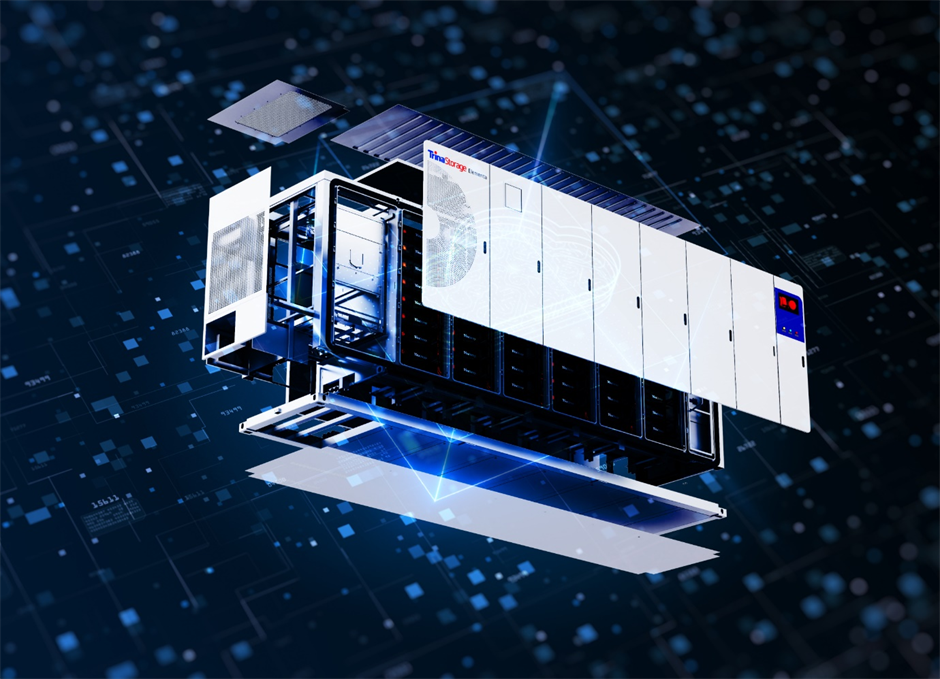Smart Energy Storage Software: Optimising Efficiency for a Brighter Tomorrow
- 23/08/02
- Energy Storage
In an era of increasing energy demand, smart energy storage systems offer a sustainable solution for power requirements globally. Highlighting their exponential growth, 2022 was a record-breaking year in the United States with the installed base of utility-scale BESS increasing by 80%.
Today's BESS innovations are no longer traditionally hardware-driven. They are supercharged by software. This transformative shift means that software is no longer just a component in these systems – it’s the power within. With enhanced efficiency and capabilities, software is paving the way towards a brighter, smarter, and more energy-efficient tomorrow. Let’s explore how this revolution is taking shape within energy storage.
BESS software architecture
Delving into the smart software architecture of a Battery Energy Storage System (BESS), the order of its components follows the system's natural flow of information and decision making.
This begins with receiving data from the grid via the communication layer, followed by operations control in response to that data through the control layer. Next, crucial operational data is stored and analysed by the data management layer, which then informs strategic decisions in the decision making layer. And finally, these results and potential actions are presented to the user through the interface.
Relatively speaking, we describe these layers in a visual metaphor to be the 'ears and voice', 'hands', 'memory', 'brain', and 'face' of the system to provide an intuitive understanding of their functions. Read on for more detail on each of the layers.
The communication layer
Functioning as the system's 'ears and voice', the communication layer establishes the BESS's dialogue with other elements in the energy ecosystem, such as solar panels, inverters and the electric utility. This layer ensures seamless exchange of real-time information, facilitating harmonious cooperation within the energy grid. By 'speaking the same language' as the other components, Trina Storage’s BESS – Elementa – plays an essential part in coordinated energy distribution, providing stability and enhanced grid resilience.
The control layer
Serving as the system's 'hands', the control layer actively manages the core operational aspects: the charging and discharging of batteries, as well as the flow of power between the BESS and the grid. Its intelligent management mechanisms consider factors such as current energy demand, grid status, and battery health. This layer is responsible for maintaining an optimal balance between energy storage and use, ensuring consistent performance even amidst fluctuating energy demands.
The data management layer
The data management layer acts as the system's 'memory', recording essential data about the BESS's performance. This includes metrics like battery charge status, volume of stored or discharged energy, and grid disruption frequency. By collecting and storing these important data points, it enables a comprehensive performance overview, facilitating necessary system adjustments and aiding in trend predictions for better future planning.
The decision making layer
The 'brain' of the BESS is the decision making layer. It uses the information from the data management layer to guide system operations. Decisions regarding when to charge or discharge batteries and how much power to feed back into the grid are systematically made based on data analysis. This level of automation ensures peak system efficiency while reducing manual intervention.
The user interface
At Trina Storage, we believe in providing user-friendly solutions. The user interface, the 'face' of our system, allows users to easily interact with the BESS. They can monitor performance in real-time, set schedules for charging or discharging, and access historical data. This empowers users with insightful information, allowing them to better understand their energy usage and make informed decisions.
The software of a BESS doesn’t comprise an enormous entity as such, but a composite of these finely tuned layers, each performing a specific function yet working in harmony to ensure the system’s peak performance. The software ultimately defines a system's efficiency, adaptability and user experience.

What role do algorithms play?
Algorithms are at the heart of smart software for Battery Energy Storage Systems (BESS), they are used at various levels and for different functionalities within the system, including:
Optimising performance
At the most fundamental level, algorithms help optimise the performance of the BESS. They form the backbone of the control layer, enabling efficient management of the charging and discharging processes. For instance, algorithms help determine the optimal time to charge or discharge the batteries, taking into account factors like the current state of charge, expected energy demand, and grid conditions.
Analysing data for decision making
Algorithms also play a critical role in the decision-making layer. They process the data collected by the data management layer and use it to make strategic operational decisions. These may include decisions about when to store or release energy, when to conduct maintenance activities, and how to respond to changes in grid conditions or energy demand.
Machine learning predictive analytics
Advanced algorithms in the form of machine learning models are used for predictive analytics. These models can learn from historical and real-time data, and make accurate predictions about future energy usage patterns, degradation of batteries over time, or potential grid disruptions. This predictive capability allows for proactive measures, enhancing the efficiency, reliability, and longevity of the BESS.

The power of flexibility in smart BESS software
One of the most significant benefits that smart BESS software brings is increased flexibility. As society’s renewable energy needs continue to evolve, the ability to adapt to changing circumstances is becoming increasingly crucial.
Application versatility
With smart BESS software, a system is no longer confined to a single role. It can be used for a multitude of applications and is especially useful at Utility & Industrial scales with the main use cases being peak shaving, load shifting, and grid stabilisation.
Peak shaving helps to reduce energy consumption during times of peak demand, while load shifting involves moving energy consumption to off-peak periods to save costs. Grid stabilisation, on the other hand, ensures a stable and reliable power supply by responding to grid disturbances in real-time. This multifaceted usage of a BESS offers greater value and functionality to its users.
Adapting to grid conditions
Additionally, smart BESS software allows the system to adapt dynamically to grid conditions. By analysing data in real-time, it can optimise its operation based on current energy usage patterns and grid status. This ability to adapt swiftly and appropriately to changes enhances the stability of the power supply and ensures optimal efficiency.

Harnessing future BESS software advancements
At Trina Storage, we are committed to harnessing the power of smart software to lead the charge in energy storage solutions, pushing boundaries to deliver systems that meet the energy demands of today and anticipate those of tomorrow.
We leverage our own proprietary software – E²MS – designed and optimised to make Elementa, our Battery Energy Storage System, even more reliable, efficient and user-friendly. Exclusive for the utility application use case.
Keep an eye out for more detail on E²MS in the next insights article coming soon.
Relevant Topics
Smart Energy Solutions
delivered straight to your inbox

